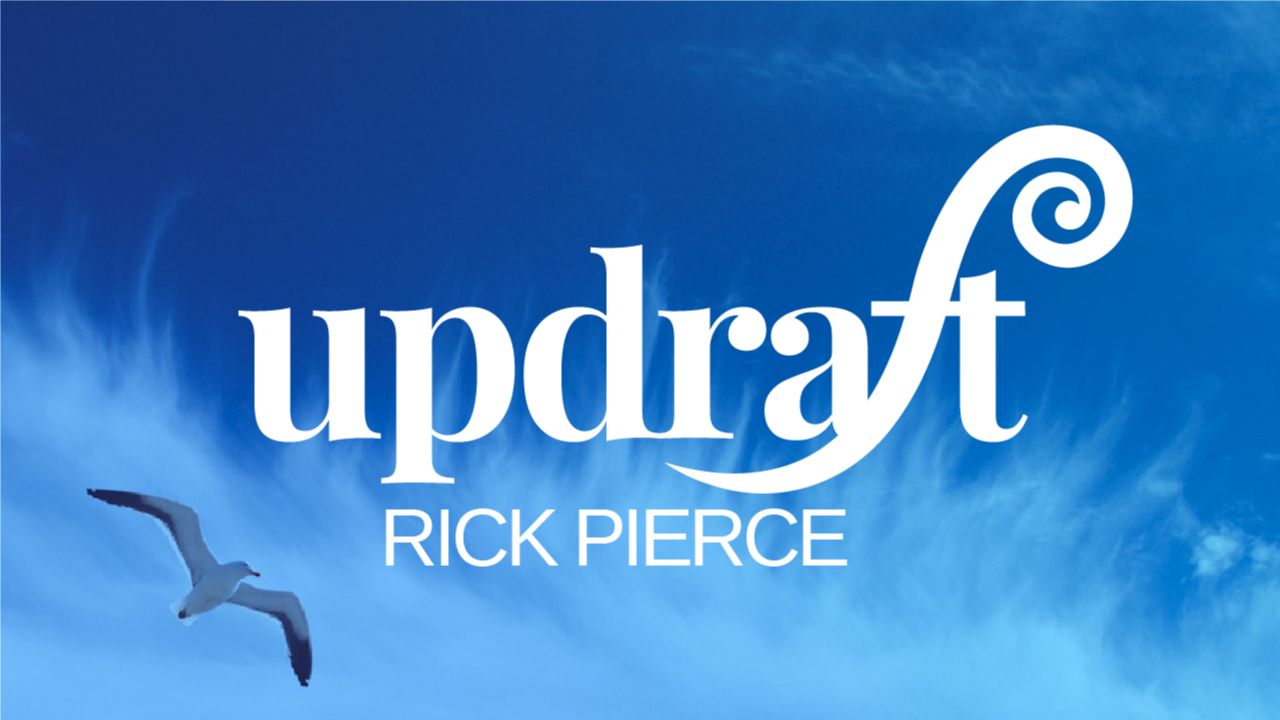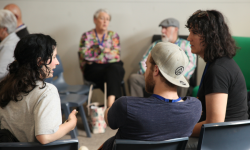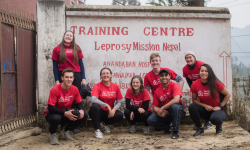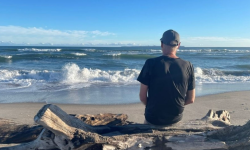
An u2018updraftu2019 in meteorology characterises a stormu2019s early development as warm air rises, eventually bringing the rains that offer sustenance and life. Ricku2019s hope for this monthly updraft column is for it to be a catalyst for change, ultimately contributing to the transformation of our faith communities. This regular column first appears in the Northern Baptist Association monthly newsletter, u2018Northern Lightsu2019.
In his book, u2018Above the Line,u2019[i] Michael Henderson recounts the following story, as told to him by his Anthropology Professor: u2018at the end of every work day, Soviet Union factory workers would be stopped at the gates and searched to ensure they were not stealing any of Mother Russiau2019s resources or tools. One particular worker, who had formed the daily habit of pushing a wheelbarrow home, would watch patiently as the armed guards searched through the wheelbarrow, burrowing through the work coat, thick wool vest and food basket it contained. Finding no stolen items, the guards would wave the worker on his way. After several years the worker suddenly stopped turning up to work. It was later discovered, much to the delighted amusement and admiration of many of his comrades, that he had been stealing wheelbarrows from the factory. He had then sold them to local farmers and in this way been able to save up enough money to bribe the appropriate officials and escape from the Soviet Union.
Henderson goes on to make the point that we often see things without grasping their full significance. It is the same with culture (understood as the u2018wayu2019 we do things and the u2018whyu2019 we do things the way we do). Culture impacts us in ways we are often unaware of, so when we talk about change (as we have been doing in previous editions of Updraft), we must also talk about culture. As leadership guru Peter Drucker stated, u2018Culture eats strategy for breakfast.u2019 If you want to change the strategy, you have to change the deeper aspects of culture. Failure to do so will result in culture sabotaging any change process.
The very nature of u2018cultureu2019 means itu2019s an outsider that often identifies the deeper influences of culture concerning traditions, patterns of behaviour and u2018whyu2019 things are done the way they are. Those within the culture rely on outsiders to see any necessary change and help them become aware of it. We see this explicitly in Exodus 18. Jethro, Mosesu2019 father-in-law, witnesses the daily process of everyone lining up to speak to Moses to have him u2018judgeu2019 their situations. u2018Why?u2019 Moses is the voice of God, informing the people of Godu2019s decrees and laws. Jethro is not impressed. u2018What you are doing is not good,u2019 he tells Moses. Then he sets out an alternative structure for the community that created relational spaces for thousands, hundreds, fifties, and tens.
Moses listened to his father-in-law and did everything he said (Exodus 18:24 - a wise response indeed!). This wasnu2019t simply a structural change. This was a culture change. Embracing Jethrou2019s relational network gave rise to a more connected, empowered, life-giving community in relationship with one another, rather than all directly connecting to Moses as their leader. It freed Moses up to lead the people rather than being bogged down in his role of u2018judge.u2019 More precious time was available for important things, as the people relationally connected, rather than queued! Such a change created relational spaces where people could be known, valued, and loved. The communityu2019s whole dynamics and relational culture were overhauled in a way that their future could look very different from their past.
That gives rise to a few questions for us to consider in our context of being church today:
What do our social, relational structures need to look like to help fuel a connected, empowered, and life-giving church community?
How do we change our social, relational structures so our lives together create a context in which weu2019re becoming the gospel? (Our life together is a living testimony of Godu2019s grace, truth, love, and life).
What do our social, relational structures need to look like to free up time and resources and empower people to engage in life together, each utilising their God-given gifts with high levels of participation and ownership?
How do we structure our social, relational way of being to connect with our local community and bring gospel renewal to people and places in our local neighbourhoods?
In creating a more flexible, organic, relational community, how do we continue to communicate vision and values that bring alignment of direction and a sense of belonging to a very diverse, relational community growing in the likeness of Christ?
Hereu2019s the challenge as we consider our response. Are we prepared to stand up and acknowledge, u2018what [we] are doing is not goodu2019. Or will we continue to push the wheelbarrows of a culture that has served the church well in the past but now inhibits us from becoming what we need to be in our changed context? COVID has disrupted our rhythms and practices and those whou2019ve left our church communities over the past three years highlight the loose relational connection many were experiencing. Itu2019s time for us to look at our culture and make a change.
When we think about the u2018why of changeu2019 and the u2018why we do things the way we do,u2019 Stanley Grenz provides an inspiring vision of the churchu2019s role now, when he states: u2018at its [the churches] heart is the goal of modelling in the present the glorious human fellowship that will come at the consummation of history.u2019[ii] That modelling of u2018glorious human fellowshipu2019 is captured in our hopes of being a collective of Baptist faith communities bringing gospel renewal to people and places in our local neighbourhoods. To do that, we need to be living differently, and we need to be changing our culture. May we have eyes to see, ears to hear, and courage to follow the new thing God is doing. Rather than continuing to push the wheelbarrows of our existing culture, letu2019s choose to change it!
[i] Michael Henderson, Above the Line: How to Create a Company Culture that Engages Employees, Delights Customers and Delivers Results (Milton, Qld: John Wiley & Sons Limited, 2014), 3-4.
[ii] Stanley J Grenz, Theology for the Community of God (Grand Rapids: Eerdmans and Vancouver: Regent College Publishing, 2000), 479.


